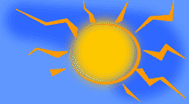When I visited Stanley
I often wondered why it was twinned with Whitby and not its namesake in Australia and now that I have visited Stanley in Tasmania
I'm even more puzzled as the two towns have a lot in common. Tasmania was settled a lot later than the Falklands and with
convicts at first but later other settlers arrived including what would today be called corporate investors. They set
up the Van Dieman's Land Company which was granted a royal charter and a lot of land in the north west of the state. Stanley
was the company town named for Lord Stanley, secretary of state for the colonies at the time.
The first industry tried was wool growing which wasn't successful for very
long. Their most profitable activity turned out to be as agents and importers for the surrounding population. The company
increased its business and profitability by selling off parts of its land grant to smaller companies and individuals which
of course needed the services of importers and agents. The company built new towns and infrastructure as the population grew
and today the north coast is the most industrialised part of Tasmania. The Van Diemans Land company still exists and has a
large holding on the wild north west corner of the state where they have a very successful cattle stud. The original headquarters
was a lovely old mansion "Highfield" outside Stanley which is being restored as a tourist attraction.
As other towns grew in the state Stanley became less important as an industrial
port and it came to rely on fishing for survival with many boats using the town as a base for the fairly sheltered waters
of Bass Strait. Now even this has declined with restrictions on inshore fishing and there are many other harbours closer to
the ocean fisheries of the west coast. A few family owned trawlers still fish from Stanley and make a good living catching
crayfish for export but the season is limited by law. The harbour itself is a much more comfortable affair than Port Stanley
being a small basin at the base of the most prominent feature on the whole coastline; a large mountainous headland called
The Nut. In lean times in the past local people harvested the short-tailed shearwaters, known as muttonbirds, which return
to the headland to nest every year. Nowadays they are protected and only tourists make the steep climb to watch the 1000s
of birds return to their burrows at dusk in summer. Penguins nest annually on the shoreline at the foot of The Nut.
With the general decline in fishing Stanley had to seek some other means
of survival and tourism became more important. It is classified as a historic town by the National Trust as it has many old
buildings some dating back to the 1840s which is very old here in Australia. These are mainly stone cottages with corrugated
iron roofs. It has a nice seafront and a village green with the weather to match not like the South Atlantic. But tourism
isn't enough on its own and the economic miracle came in the unlikely guise of Macdonalds - they of the golden arches. The
area around Stanley now grows most of the potatoes used by Macdonalds in Australia. I don't think the Falklands will ever
match that but Tasmania also has offshore oil and Stanley recently has started to gain more business for its port in servicing
the rigs; and of course more local employment, but not any share in actual oil revenue. Maybe when your wells come in the
politicians of the Falklands might grant themselves a junket to Tasmania and visit Stanley - who knows you might become a
triplet town.

